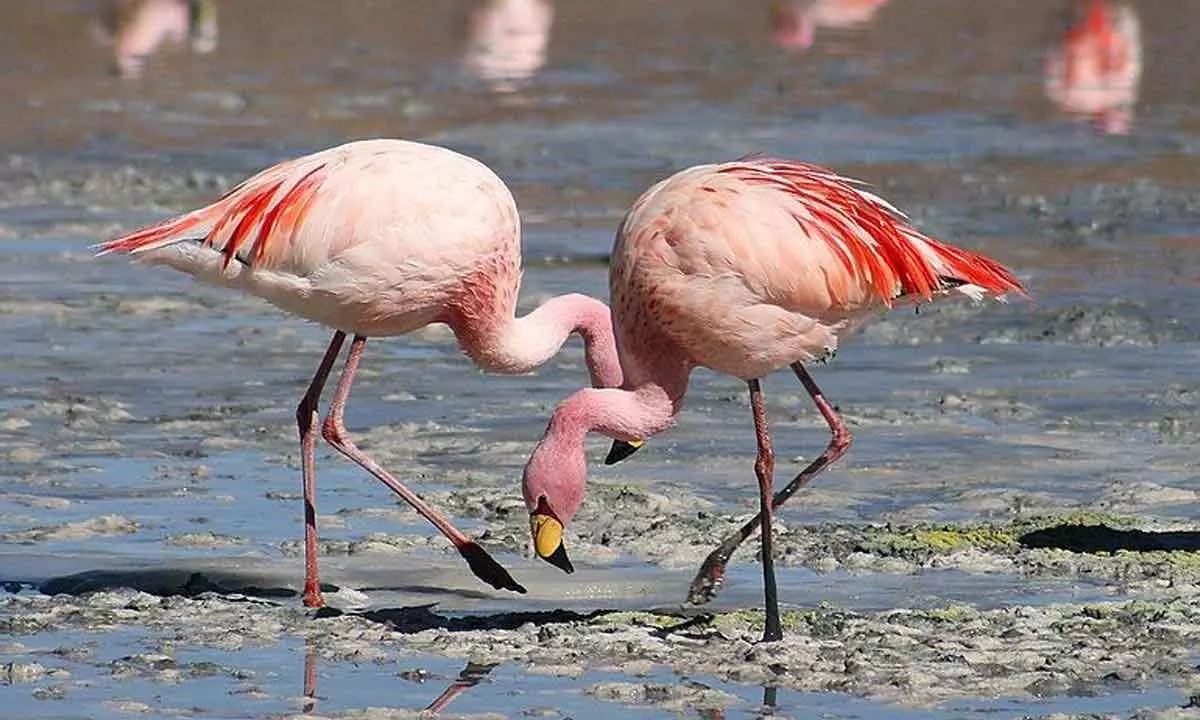Emirates flight with 310 passengers has a brush with 40 flamingos
NatConnect cautioned that upcoming Navi Mumbai International Airport too is prone to such bird strikes
image for illustrative purpose

Shell-shocked by the massive flamingo deaths after crashing into an Emirate aircraft over Mumbai on Monday night, environmentalists said urban planners have been ignoring warnings about such disasters.
“We are sad to say that it was a disaster that was waiting to happen,” said NatConnect Foundation commenting on the flamingo strike on an Emirate flight from Dubai to Mumbai on Monday night.
Talking to Bizz Buzz, NatConnect director B N Kumar said, “Had any passenger been affected due to the bird hit, it would have made global headlines, but the death of poor 40 flamingos does not seem to bother the authorities, urban planners in particular.” “The flamingos which literally sacrificed their lives to warn the human beings of impending disasters were apparently on their return migration from Mumbai to Gujarat. The pink birds make Mumbai their winter-summer home,” BNHS researcher Mrugank Prabhu said.
In his email to the Director General of Civil Aviation (DGCA), Kumar called for a high-level investigation to ascertain as to how the Emirates aircraft clashed with the birds and whether the pilot could not notice the flock on his radar.
Sandip Sareen of Navi Mumbai Environmental Preservation Society, said the bird crash is heart wrenching.
Close to a lakh of flamingos keep flying in the Thane Creek Flamingo Sanctuary, the only Ramsar site in an urban area in the country.
NatConnect, which, along with several fellow environment-focused organisations, has been conducting a series of campaigns to save Mumbai Biodiversity and wetlands and mangroves, cautioned that the upcoming Navi Mumbai International Airport too is prone to such bird strikes.
This is because the wetlands, the flamingo abodes in Navi Mumbai are being systematically buried despite warnings from organisations such as BNHS. The birds, if they miss their traditional destinations, could land at Navi Mumbai airport site which has mudflats along the Panvel creek.
As part of the wildlife mitigation measures for the Atal Setu, the State government had planned bird sanctuaries at Sewri-Mahul, NRI-TS Chanakya and Panje-Dongari wetlands and none other than the then CM Devendra Fadnavis had himself announced it.
“The Atal Setu is operational but we have not heard anything about protecting the wetlands,” Kumar regretted.
Moreover, NatConnect pointed out, the Adani airport has committed in its Environment Impact Assessment (EIA) report that the wetlands as outlined by BNHS would be preserved. The EIA, submitted for renewal of the environmental clearance (EC) for the Navi Mumbai Airport, has also said the golf course, planned on the NRI wetlands, was cancelled.
This gave us the hope that the wetlands would be preserved, yet the systematic destruction of the water bodies is on, NatConnect said.
CIDCO is out to bury even the Bombay High Court protected wetlands such as the 30-acre DPS Flamingo Lake, Kumar said and drew the government’s attention to the fact that the city planner has violated environmental norms.
Responding to NatConnect’s complaint the High Court appointed Mangrove Committee has called for a site inspection at DPS Flamingo Lake on May 29 while the Centre asked the State Environment department to probe and report.
Nandakumar Pawar of Sagar Shakti said of the BNHS identified wetlands, the ones at Belpada, Bhendkhal and Panje in Uran taluka are being destroyed as CIDCO leased them out for so-called infrastructure. Belpada is under JNPA while Bhendkhal and Panje with NMSEZ.
Taking up a petition filed by Pawar, the High Court directed the Environment department to record the petitioner and CDCO and decide on the 289-hecare intertidal Panje wetland.
Similarly, wetlands in Kharghar have been under attack with CIDCO not bothering to save them from encroachments. Other than a host of bird species, flamingos too land at Kharghar, bird lover Jyoti Nadkarni said.
These birds have a right to their habitats, of which Mumbai creek and its satellite wetlands are a crucial cog in the wheel, Kharghar-based activist Nareshchandra Singh said.
“We need to carefully maintain the ecological and environmental balance at and around these habitats, otherwise expect such incidents,” Singh said.

